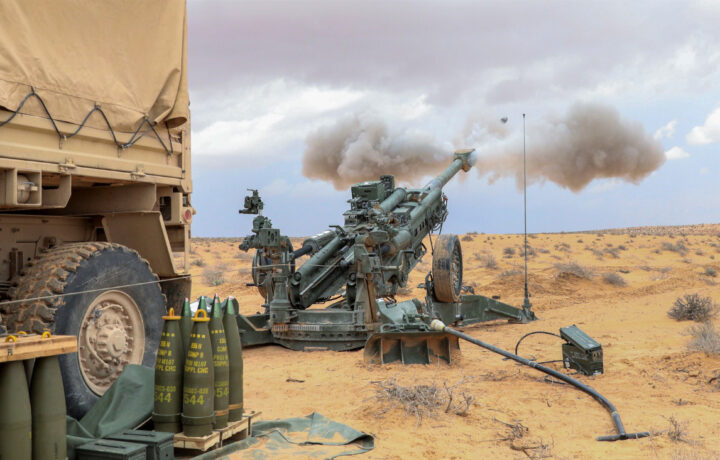Two summers ago, hunters and sports shooters across the United States faced the “Great Ammunition Shortage,” which drove up prices to record levels. The issue has been mostly addressed, and the most popular calibers are once again on store shelves. Though it even impacted some police departments around the country, the United States military was largely unaffected as its ammunition is produced by a private contractor at a government-owned facility.
However, following remarks from the White House earlier this month, there are now concerns that the U.S. could be running out of ammunition. At issue is the amount of ordnance – notably artillery shells – that have been supplied to Ukraine as part of Washington’s aid package.
As The New York Times reported, the U.S. military has been watching some of its stockpiles dwindle. That has included the 155mm artillery rounds, which are employed in the M777 Howitzer, while the U.S. has also sent vast quantities of its FGM-148 Javelin anti-tank launchers and ordnance as well.
Many of the same issues that led to the ammunition shortage that impacted the civilian market – including industry consolidation, depleted manufacturing lines, and supply chain bottlenecks – have continued to impact the production of artillery shells and other weapons.
Ammunition Production Getting Increased
The exact nature of the problem came into focus only earlier this month when President Joe Biden told CNN’s Fareed Zakaria that the U.S. was low on 155 mm artillery shells. The president used the depleted stockpiles of the ordnance as a reason why the U.S. has agreed to send controversial cluster munitions – banned by nations around the world – to Ukraine.
“This is a war relating to munitions. And they’re running out of that ammunition, and we’re low on it,” Biden told Zakaria. “And so, what I finally did, I took the recommendation of the Defense Department to – not permanently – but to allow for this transition period while we get more 155 weapons, these shells, for the Ukrainians.”
The White House has defended the administration green-lighting cluster munitions for Ukraine, stating that the goal of this is to ensure Ukraine is not left defenseless against Russia. Fighting in the Eastern Donbas region of Ukraine has consisted of artillery duels where each side fires dozens, even hundreds of rounds daily.
“We are authorizing cluster munitions to ensure that Ukraine is not left defenseless while we wait for our own domestic production of ammunition to ramp up substantially, which we are in the process of doing as are our allies and partners,” a White House Official told The New York Post. “These cluster munitions are a bridge as we significantly increase production of ammunition over the coming months – and will have much higher production levels soon.”
Addressing the Shortage
The situation is not ideal for the United States, but it should be noted again that the United States is not on a wartime economy. Artillery shells aren’t produced around the clock. However, the fact that the stockpiles are being depleted faster than they can be replaced has been seen as a concern.
The U.S. Army announced earlier this year that it would boost production of the 155mm artillery shells more than six-fold – to 85,000 a month – by fiscal 2028. The shells are currently produced at the Iowa Army Ammunition Plant in Des Moines County, IA. The facility, which is part of the U.S. Army Joint Munitions Command is currently operated by American Ordnance, LLC.
It also produces a variety of tank rounds, missile warheads, and other ordnance.
DoD is Addressing Amunition Shortage
As previously reported, the Department of Defense (DoD) has been seeking to address the issue. Last year, President Biden even visited Lockheed Martin’s facilities in Alabama to see how the defense contractor was planning to increase production of its FGM-148 Javelin anti-tank missile systems. The company had pledged to increase production of the anti-tank system that has been used to great success by the Ukrainians in destroying Russian tanks.
The shortage of ordnance is a problem, but it pales in comparison to what the British government faced during the First World War when the shortage of artillery shells was so great that it resulted in the fall of Prime Minister H.H. Asquith. The government even enacted the Munitions of War Act 1915, which was meant to maximize munitions output, while it also brought private companies supplying the British military under the tight control of the newly created Ministry of Munitions – which was initially headed by future war hero Winston Churchill.
The United States won’t require such a statesman to rectify this situation. It will just require ramping up production to ensure that the U.S. military is ready just in case.




